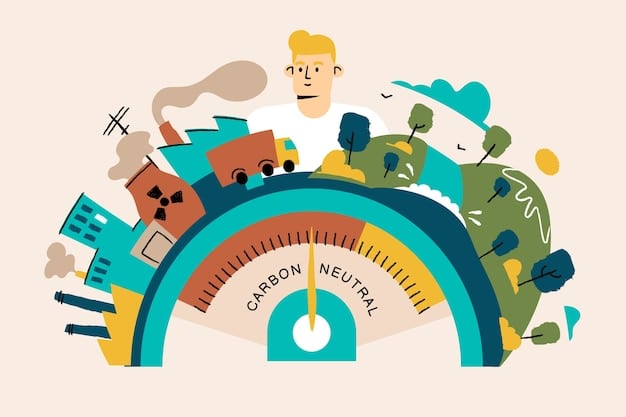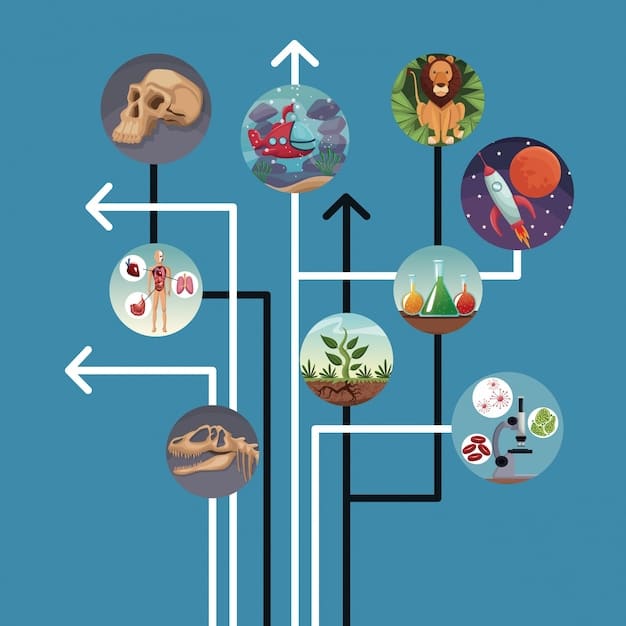Environmental Policy Article – environmen_greeycloudcom_2_1753393078_465532ec_what_are_t.html

The latest IPCC Report underscores an urgent need for the US to significantly strengthen its environmental policies, accelerating decarbonization, enhancing climate resilience, and fostering international cooperation to avert catastrophic climate change impacts.
The release of the latest Intergovernmental Panel on Climate Change (IPCC) report has once again sent ripples through the global scientific community and policymakers alike. But beyond the headlines and scientific jargon, a critical question emerges for every nation: What are the Implications of the Latest IPCC Report for US Environmental Policy? This comprehensive analysis delves into the nuances of the report’s findings and their profound potential to reshape America’s approach to climate action and environmental governance.
Understanding the IPCC’s Latest Findings
The IPCC, the United Nations body for assessing climate change, regularly synthesizes the most up-to-date scientific literature to provide comprehensive assessments. Their reports are not prescriptive policy documents but rather offer the scientific basis for governments to develop climate-related policies. The most recent installments have amplified previous warnings, painting a stark picture of accelerated warming, intensifying extreme weather events, and nearing tipping points for critical Earth systems. These findings unequivocally reinforce the urgency of drastic, systemic changes.
The core message from the latest IPCC assessment rounds, particularly the Synthesis Report summarizing the AR6 cycle, is unambiguous: human activities have unequivocally caused global warming, and widespread and rapid changes in the atmosphere, ocean, cryosphere, and biosphere have occurred. The report details observed impacts, future climate change projections under various emissions scenarios, and the effectiveness and feasibility of adaptation and mitigation options. Crucially, it highlights that without immediate and deep emissions reductions across all sectors, limiting global warming to 1.5°C will be beyond reach.
Observed Impacts and Future Projections
The IPCC details how climate change is already affecting every inhabited region across the globe, with human influence contributing to many observed changes in weather and climate extremes. Heatwaves, heavy precipitation, droughts, and tropical cyclones have all become more frequent and/or intense. For the US, these impacts manifest as increasingly severe wildfires in the West, prolonged droughts impacting agriculture in the Southwest, more intense hurricanes along the Atlantic and Gulf coasts, and rising sea levels threatening coastal communities. The report projects that these trends will only accelerate, leading to:
- Increased frequency and intensity of extreme heat events, posing significant public health risks.
- Further intensification of the global water cycle, leading to more severe flooding and droughts.
- Continued sea level rise, threatening coastal infrastructure and ecosystems.
- Profound impacts on biodiversity and ecosystems, leading to species loss and ecosystem collapse.
The Urgency of Action and Cumulative Emissions
A key emphasis of the latest report is the concept of a “carbon budget” – the maximum amount of carbon dioxide that can be emitted globally to stay within a given temperature target. The remaining carbon budget for 1.5°C is small and diminishing rapidly. This means every ton of CO2 emitted contributes directly to global warming, underscoring the critical need for immediate and aggressive mitigation efforts. The report emphasizes that every increment of global warming matters, highlighting the escalating risks with each additional fraction of a degree. This scientific imperative forms the bedrock upon which any robust environmental policy must now be built.
The scientific consensus is clear: delaying action will drastically increase the costs and challenges of addressing climate change, making significant and lasting damages unavoidable. The window of opportunity to secure a liveable and sustainable future for all is rapidly closing. This sense of acute urgency, grounded in verifiable scientific data, must translate directly into the ambition and speed of US environmental policy.
Strengthening Emissions Reduction Targets
The IPCC report’s findings provide an irrefutable scientific basis for the US to significantly strengthen its national emissions reduction targets. The current Nationally Determined Contribution (NDC) under the Paris Agreement commits the US to cut economy-wide net greenhouse gas emissions by 50-52% below 2005 levels by 2030. While ambitious, the IPCC’s assessment suggests that even more aggressive action might be necessary to align with the 1.5°C goal and provide global leadership. This calls for a multi-sectoral approach, targeting the primary sources of emissions.
Decarbonizing the Energy Sector
The energy sector remains the largest contributor to global greenhouse gas emissions. The IPCC report highlights the critical need for a rapid transition away from fossil fuels and towards renewable energy sources. For the US, this means accelerating the deployment of solar, wind, and geothermal power, alongside significant investments in grid modernization and energy storage solutions. Policy implications include:
- Phasing out coal-fired power plants and limiting new natural gas infrastructure.
- Implementing stronger incentives for renewable energy development and adoption, such as tax credits and direct subsidies.
- Investing in advanced energy technologies, including carbon capture, utilization, and storage (CCUS) for hard-to-abate sectors, though with careful consideration of its scale and feasibility.
Federal and state policies could further encourage this transition through robust clean energy standards, enhanced transmission line development, and streamlined permitting processes for renewable projects. The economic benefits of such a transition, including job creation and energy independence, could also be significant.

Addressing Transportation and Industrial Emissions
Beyond the power sector, transportation and industry are substantial sources of emissions. The IPCC report underscores the need for comprehensive strategies to decarbonize these sectors. This involves promoting electric vehicles through charging infrastructure expansion and consumer incentives, investing in public transit, and developing sustainable aviation and shipping fuels. For industry, policies could include:
- Implementing stricter emissions standards for industrial processes.
- Encouraging the adoption of energy-efficient technologies and circular economy principles.
- Supporting research and development for low-carbon industrial processes, such as green hydrogen production for steel and chemical industries.
Policies like carbon pricing or cap-and-trade systems could provide economic signals across all sectors to reduce emissions more broadly. These mechanisms, if designed effectively, can incentivize innovation and efficiency while generating revenue for further climate investments.
Land Use and Agriculture
The IPCC also emphasizes the role of land use, land-use change, and forestry (LULUCF) in climate mitigation. Sustainable land management practices, afforestation, reforestation, and improved agricultural practices can significantly contribute to carbon sequestration and emissions reduction. US environmental policy could strengthen programs that:
- Incentivize farmers and landowners to adopt climate-smart agriculture, such as reduced tillage and cover cropping.
- Protect and restore carbon sinks like forests, wetlands, and coastal ecosystems.
- Reduce methane emissions from agriculture, particularly livestock and waste management.
These efforts not only contribute to climate goals but also offer co-benefits for biodiversity, water quality, and soil health. Integrating climate considerations into urban planning and infrastructure development can further reduce emissions from urban centers.
Enhancing Climate Resilience and Adaptation
While mitigation focuses on reducing greenhouse gas emissions to slow global warming, adaptation refers to adjusting to actual or expected future climate. The IPCC report makes it clear that even with aggressive mitigation, some level of climate change and its associated impacts are inevitable. Therefore, enhancing climate resilience and adaptation measures must become a central pillar of US environmental policy. This involves a proactive approach to safeguard communities, infrastructure, and natural systems from the discernible effects of a changing climate.
Protecting Infrastructure and Communities
The US, with its vast and diverse geography, is vulnerable to a wide range of climate impacts, from hurricanes and sea-level rise on its coasts to wildfires and drought in its interior. The IPCC findings highlight the need for robust strategies to protect critical infrastructure, human settlements, and vulnerable populations. This could involve:
- Investing in climate-resilient infrastructure, such as reinforced buildings, elevated roads, and improved drainage systems.
- Developing early warning systems for extreme weather events and improving disaster preparedness and response capabilities.
- Relocating at-risk communities or implementing managed retreat strategies in areas facing unavoidable hazards like chronic flooding or sea-level inundation.
Federal funding and technical assistance programs can play a crucial role in enabling states and local governments to undertake these essential adaptation measures. Public-private partnerships can also mobilize resources and expertise for large-scale resilience projects.
Safeguarding Natural Ecosystems
Natural ecosystems provide essential services, including clean air and water, biodiversity, and carbon sequestration. However, they are increasingly threatened by climate change. The IPCC report underscores the importance of protecting and restoring these vital natural assets to enhance both ecosystem and human resilience. Policy implications include:
- Implementing nature-based solutions for coastal protection, such as restoring mangroves and salt marshes to buffer against storm surges.
- Managing forests to reduce wildfire risk and promote healthier, more resilient ecosystems.
- Protecting critical habitats and biodiversity corridors to allow species to adapt to changing climatic conditions.
Integrating ecological restoration and conservation into climate policy offers cost-effective and often multi-beneficial approaches to both adaptation and mitigation. The resilience of natural systems directly underpins the resilience of human societies.
Addressing Climate Justice and Equity
The IPCC report consistently emphasizes that the impacts of climate change disproportionately affect vulnerable populations and exacerbate existing inequalities. Climate justice, therefore, is not merely a moral imperative but a pragmatic necessity for effective and sustainable climate policy. For the US, this means ensuring that climate policies do not unintentionally burden disadvantaged communities and actively work to reduce their exposure to environmental hazards.
Fair Transitions and Workforce Development
A transition to a clean energy economy will inevitably impact traditional fossil fuel industries and their workforces. Climate policy must include robust provisions for a “just transition,” ensuring that workers and communities affected by these shifts are supported. This can involve:
- Investing in job retraining programs for clean energy sectors.
- Providing economic diversification support for communities historically reliant on fossil fuel industries.
- Ensuring union representation and fair labor practices in new green industries.
By proactively addressing these social and economic dimensions, policymakers can build broader public support for ambitious climate action and avoid creating new pockets of economic hardship.
Targeting Vulnerable Communities
Historically marginalized communities, often low-income populations and communities of color, frequently bear the brunt of environmental pollution and are most vulnerable to climate impacts due to factors such as substandard housing, limited access to healthcare, and lack of political representation. US environmental policy must prioritize these communities by:
- Directing climate adaptation funding and resources to frontline communities.
- Implementing policies to reduce air and water pollution in overburdened neighborhoods.
- Ensuring meaningful community engagement in climate policy development and implementation.
Legislation like the Justice40 Initiative, which aims to deliver 40% of the overall benefits of certain federal investments to disadvantaged communities, is a step in the right direction towards achieving greater climate equity.
International Cooperation and Global Leadership
Climate change is a global problem that requires global solutions. The IPCC report underscores the interconnectedness of climate systems and the necessity of international cooperation to address shared challenges. For the US, a key implication is the reinforced need to reassert its role as a leader in international climate action and diplomacy. This involves more than just domestic policy; it extends to how the US engages with other nations on climate issues.
Re-engagement with Multilateral Efforts
The US rejoining the Paris Agreement signaled a renewed commitment to global climate action. The IPCC report provides further impetus for the US to actively participate in and strengthen multilateral climate forums. This includes:
- Pushing for more ambitious NDCs from other major emitters.
- Contributing to international climate finance mechanisms to support adaptation and mitigation efforts in developing countries.
- Engaging in technological transfer and capacity building to help nations adopt cleaner technologies.
US diplomatic efforts can also focus on fostering cooperation on climate research, data sharing, and early warning systems, recognizing that climate impacts often transcend national borders. Effectively addressing global warming means working collaboratively.
Addressing the “Loss and Damage” Debate
A particularly contentious issue in international climate negotiations is “loss and damage” – compensation and support for countries particularly vulnerable to the adverse effects of climate change. The IPCC report’s detailed assessment of impacts and attribution strengthens the moral and scientific case for addressing this issue. While navigating this complex terrain, US policy could:
- Explore mechanisms for providing financial and technical assistance to developing countries for climate-induced losses and damages.
- Participate constructively in international dialogues to establish equitable and effective approaches to this challenge.
- Focus on solutions that build resilience and adaptive capacity to reduce future loss and damage.
Establishing trust and demonstrating solidarity with vulnerable nations is crucial for building a strong, united front against the global climate crisis. The US role in these discussions will be pivotal.
Policy Pathways and Implementation Challenges
Translating the scientific imperatives of the IPCC report into concrete, effective US environmental policy presents significant challenges. These range from political polarization and economic considerations to technological hurdles and the complexities of federal-state relations. However, the report also offers insights into feasible pathways and the urgency that can drive political will.
Legislative and Regulatory Approaches
Implementing the necessary policy shifts will require a combination of legislative action and regulatory frameworks. This could include:
- Passing comprehensive climate legislation that sets economy-wide emissions caps, incentivizes clean energy, and supports adaptation efforts.
- Utilizing regulatory authority through agencies like the Environmental Protection Agency (EPA) to set stricter emissions standards for vehicles, power plants, and industrial facilities.
- Developing new financial instruments and incentives to drive private sector investment in climate solutions.
The effectiveness of these approaches will depend on political consensus, sustained public support, and robust enforcement mechanisms. Bipartisan cooperation, while challenging, remains essential for durable climate policy.

Technological Innovation and Investment
Technological innovation is critical for achieving ambitious climate goals. The IPCC report points to the need for accelerated development and deployment of a wide range of technologies, from advanced renewable energy systems to carbon removal solutions. US policy can drive this through:
- Significant public investment in climate research and development across various scientific fields.
- Fostering public-private partnerships to scale up nascent technologies.
- Creating market signals that incentivize innovation and adoption of low-carbon technologies.
This investment in innovation not only supports climate goals but also positions the US for leadership in the global green economy, creating new industries and jobs.
Overcoming Political and Economic Hurdles
The path forward is fraught with political and economic challenges. Entrenched interests, misinformation campaigns, and concerns about economic competitiveness often impede climate action. Overcoming these hurdles requires:
- Clear and consistent communication of the scientific consensus and the economic benefits of climate action.
- Building broad coalitions that include businesses, labor unions, environmental groups, and diverse communities.
- Designing policies that minimize economic dislocation and ensure equitable distribution of costs and benefits.
The IPCC reports provide the scientific foundation, but ultimately, the implementation of robust US environmental policy hinges on political leadership and sustained societal commitment to a sustainable future. The cost of inaction, as highlighted by the report, far outweighs the investments required for climate mitigation and adaptation.
| Key Area | Brief Implication for US Policy |
|---|---|
| 📊 Emissions Targets | Strengthen current NDC, accelerate decarbonization across all sectors. |
| 🛡️ Climate Resilience | Proactive investment in infrastructure and ecosystem adaptation. |
| ⚖️ Climate Justice | Prioritize vulnerable communities and ensure a just economic transition. |
| 🤝 Global Leadership | Reassert US role in international climate cooperation and finance. |
Frequently Asked Questions
▼
The primary message from the latest IPCC report is that human activities have unequivocally caused global warming, leading to widespread and rapid changes. It stresses the urgent need for deep, rapid, and sustained greenhouse gas emissions reductions across all sectors to limit warming to 1.5°C and avoid more severe impacts. Delaying action will increase the challenges significantly.
▼
The report implies that the US may need to consider strengthening its current Nationally Determined Contribution (NDC) under the Paris Agreement. It reinforces the scientific imperative for accelerating decarbonization of the energy, transportation, and industrial sectors, alongside promoting sustainable land use practices, to meet global temperature goals more effectively.
▼
Climate resilience refers to the ability to anticipate, prepare for, and respond to hazardous events, trends, or disturbances related to climate change. The IPCC report highlights its importance for the US because even with mitigation, some climate impacts are inevitable. Building resilience protects infrastructure, communities, and natural ecosystems from intensifying extreme weather and other climate-related threats.
▼
The IPCC report emphasizes that climate change disproportionately affects vulnerable populations and exacerbates existing inequalities. For US policy, this means ensuring climate solutions do not burden disadvantaged communities. It necessitates investments in just transitions for fossil fuel workers, directing resources to frontline communities, and empowering marginalized voices in policy development.
▼
The IPCC report underscores that climate change is a global challenge requiring collective action. The US must reassert its leadership in international climate diplomacy. This involves actively participating in multilateral forums, advocating for ambitious global targets, contributing to climate finance for developing nations, and addressing complex issues like “loss and damage” to foster global trust and collaboration.
Conclusion
The latest IPCC report serves as a definitive scientific roadmap, unequivocally outlining the severity of the climate crisis and the rapidly closing window for action. For US environmental policy, these findings are not merely academic but represent a profound call to strengthen emissions reduction commitments, significantly enhance climate resilience, embed climate justice principles at every level, and reassert robust global leadership. The implications are clear: a transformation of energy systems, a safeguarding of communities, and a commitment to equitable solutions are not just choices but necessities for a stable and sustainable future. The path forward demands ambition, innovation, and unwavering political will to translate scientific consensus into impactful policy, securing a livable planet for generations to come.





